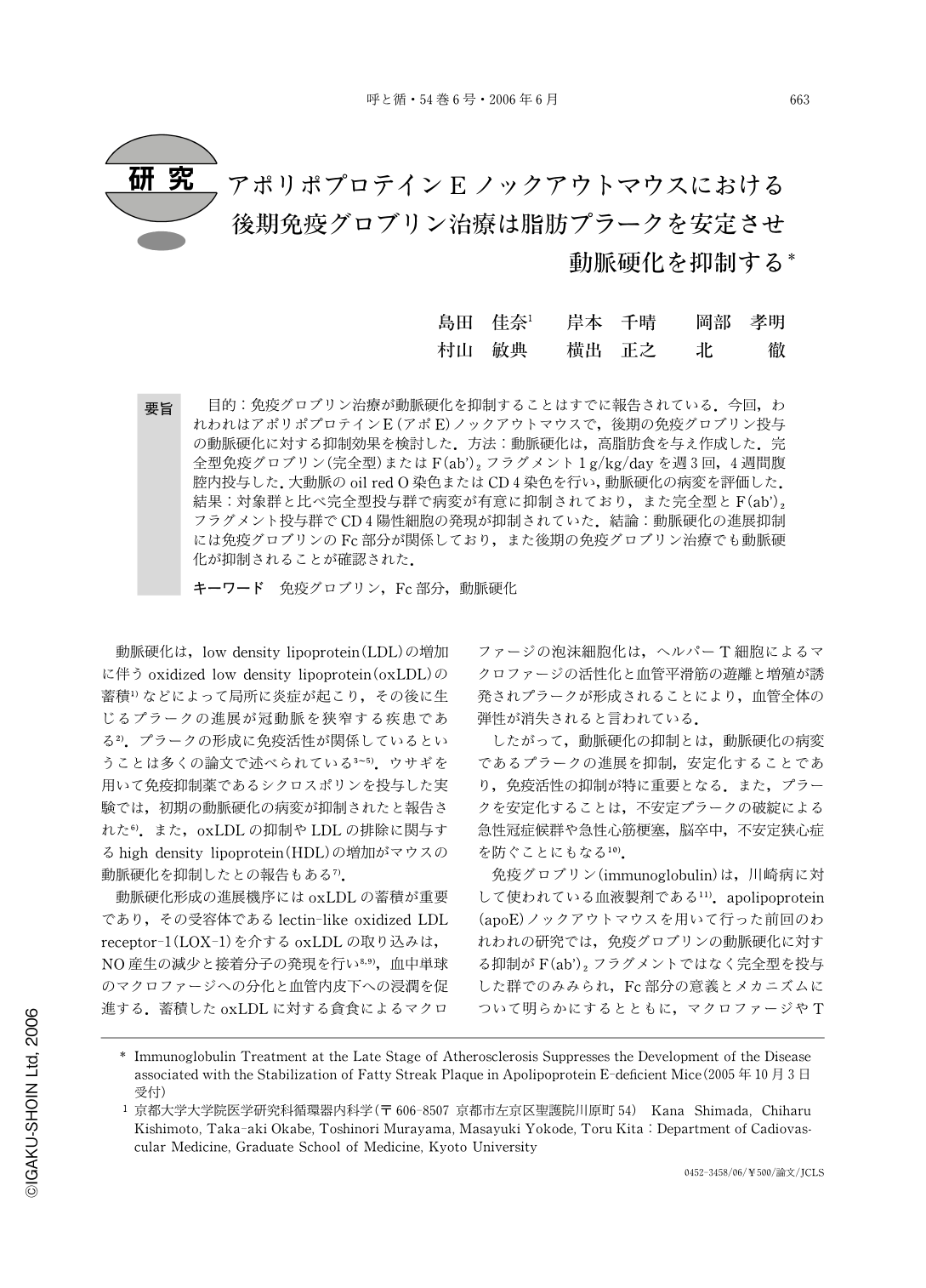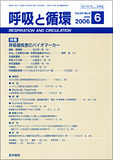Japanese
English
- 有料閲覧
- Abstract 文献概要
- 1ページ目 Look Inside
- 参考文献 Reference
目的:免疫グロブリン治療が動脈硬化を抑制することはすでに報告されている.今回,われわれはアポリポプロテインE(アポE)ノックアウトマウスで,後期の免疫グロブリン投与の動脈硬化に対する抑制効果を検討した.方法:動脈硬化は,高脂肪食を与え作成した.完全型免疫グロブリン(完全型)またはF(ab’)2フラグメント1g/kg/dayを週3回,4週間腹腔内投与した.大動脈のoil red O染色またはCD4染色を行い,動脈硬化の病変を評価した.結果:対象群と比べ完全型投与群で病変が有意に抑制されており,また完全型とF(ab’)2フラグメント投与群でCD4陽性細胞の発現が抑制されていた.結論:動脈硬化の進展抑制には免疫グロブリンのFc部分が関係しており,また後期の免疫グロブリン治療でも動脈硬化が抑制されることが確認された.
[Objectives] It has already been reported that immunoglobulin treatment, simultaneously with the onset of the disease, suppresses experimental atherosclerosis. In this study, we investigated effects of immunoglobulin on apolipoprotein E-deficient mice at the late stage of the disease.
[Methods] Atherosclerosis was induced in mice fed a high-fat diet. Mice were intraperitoneally treated with an injection of either intact type of immunoglobulin(1mg/kg/day) or F(ab')2 fragments of immunoglobulin(1mg/kg/day) on alternate days over 4 weeks. Oil red-O staining and immunohistochemistric staining with CD4 cells were performed. Atherosclerotic lesion was assessed and compared among the groups.
[Results] The atherosclerotic lesion of the immunoglobulin treated group was significantly suppressed compared with the saline group, and expression of CD4+cells in the intact type and the F(ab')2 fragments-treated groups were reduced compared with the control group.
[Conclusions] Suppression of the atherosclerotic lesion by immunoglobulin was due to the Fc receptors of immunoglobulin. Atherosclerosis may be suppressed by immunoglobulin treatment even at the late stage of the disease.

Copyright © 2006, Igaku-Shoin Ltd. All rights reserved.


